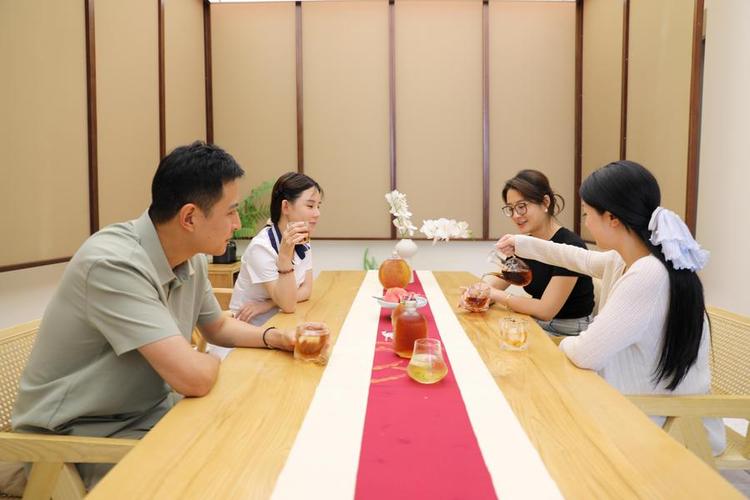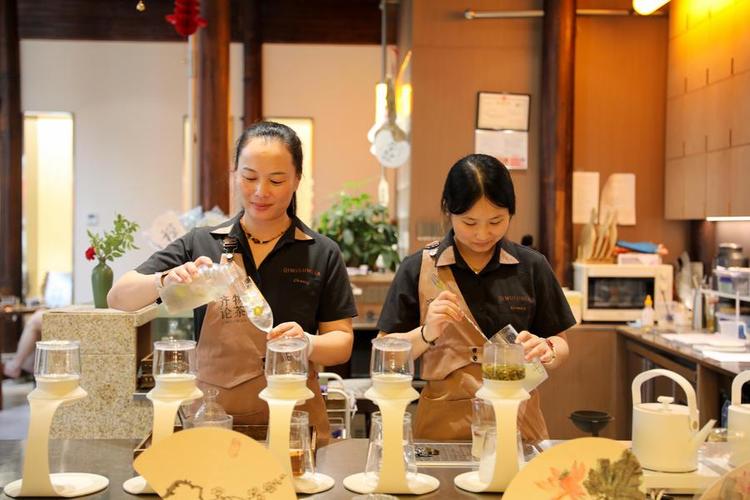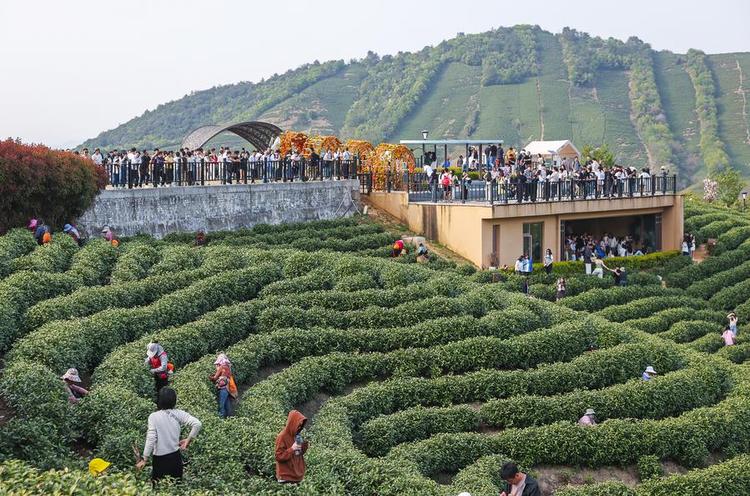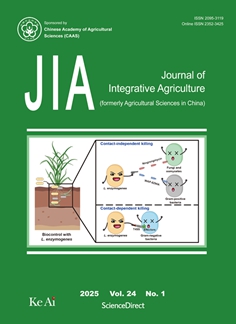
Although the traditional spring harvest season is now over, in the humming workshop of a tea company in the city of Shengzhou, east China's Zhejiang Province, the aroma of fresh leaves still lingers in the air, while workers operate machines in churning out batches of vibrant green tea.
More than 4,000 km away, Latifahtul Khoiriyah in Jakarta, Indonesia, took a taxi during her lunch break on a sweltering summer's day, making this trip especially to try out the bubble tea of Chinese brand CHAGEE. This white collar worker in the finance sector learned about CHAGEE on social media like TikTok and Instagram.
"It tastes good," she said, adding that compared with some other bubble brands, CHAGEE is less sweet, while its packages are of better design.
"Jasmine has a light and rich floral flavor which is extremely refreshing, while the Oolong tea has a deeper aftertaste of roasted cream," said another customer named Raditya. "It is evident that high-quality tea is used in CHAGEE."
Featuring diverse flavors, achieved by combining ingredients such as fresh fruits, tea leaves, milk and cheese, China's new-style tea beverage has expanded its market rapidly in recent years, capturing the hearts of customers across China and also overseas.
Data released by iiMedia Research shows that in 2024, China's new-style tea beverage market value exceeded 350 billion yuan (about 48.5 billion U.S. dollars) -- up 6.4 percent from a year earlier, while the market value is expected to reach 374.93 billion yuan by the end of 2025.

FRAGRANCE SPREADING OVERSEAS
A report by Nanfang Metropolis Daily suggested that Chinese new-style tea beverage brands began opening outlets overseas in the 2010s at an accelerating pace. According to the National Business Daily, by the end of last year, Chinese new-style tea beverage brands had opened more than 5,000 outlets overseas.
While various Chinese bubble brands could be seen in many Western cities such as London and Sydney, Southeast Asia emerged as one of their major markets.
HEYTEA, which boasts over 4,000 stores worldwide, launched its first overseas store in Singapore in 2018. Naixue opened its first overseas flagship outlet last year in Bangkok's well-known shopping center Central World, sparking a frenzy among young consumers.
On April 11 this year, CHAGEE opened three outlets in Jakarta. By July 15, this number had grown to eight. In its PIK Avenue outlet, sales topped 10,000 cups in the first three days of its opening, while the number of membership registrations exceeded 5,000 within one week.
Mixue is arguably the most popular Chinese bubble tea brand in Indonesia with more than 2,600 outlets. By the end of 2024, Mixue had created jobs for about 12,800 people in Indonesia. According to Han Wenchao, who is in charge of operations at the Mixue Indonesian branch, they have about 250 staff members -- of whom more than 96 percent are locals.

REDEFINING TEA CULTURE
Chen Fuqiao, an associate researcher with the Chinese Academy of Agricultural Sciences (CAAS), noted that the popularity of new-style tea beverages reflected the aspirations of the people, especially the young, who favor healthy drinks and emotional release.
The new-style tea beverage has become a window for people to learn the traditional Chinese tea culture, he said.
According to a report released by the CAAS, 46.9 percent of young Chinese gain a better understanding of traditional tea during the consumption of new-style tea beverages, and 74.3 percent expressed willingness to try traditional tea after tasting a new-style tea beverage.
The rapid rise of such brands has reshaped the tea supply chain in recent years. China produces about 3 million tonnes of tea leaves each year -- involving around 80 million farmers.
Soaring demand for raw tea materials has opened up new opportunities for making use of previously underutilized summer and autumn tea resources, Chen said.

"We've invested tens of millions of yuan in three digital production lines," said Xu Jie, deputy general manager of the Zhejiang Wafa Tea Co., Ltd. "Right now, we're rushing to fulfill base tea orders for several domestic tea beverage brands."
In the first half of 2025, Wafa Tea produced 1,300 tonnes of Longjing raw tea, supporting the development of 30,000 mu of tea gardens and generating over 40 million yuan in sales. Full-year sales are expected to exceed 70 million yuan, according to Xu.
"Longjing tea is one of Zhejiang's most iconic products," said Lu Debiao, a tea expert at the Zhejiang Provincial Department of Agriculture and Rural Affairs. "The integration of the Longjing brand with the booming new-style tea beverage sector has become a recent highlight, injecting new vitality into the traditional product."

BENEFITING RURAL GROWTH
Located in Shengzhou, the largest Longjing tea-producing area in China, Wafa Tea's development is a microcosm of the transformation of China's tea industry.
Shengzhou is promoting a "three-season harvest" strategy across its 210,000 mu of tea gardens. In spring, farmers hand-pick high-end teas, while in summer and autumn, fresh leaves are harvested for targeted supply to new-style beverage makers and export processors.
This shift has helped raise annual income by over 3,000 yuan per mu, the local agriculture and rural affairs bureau revealed.
In addition to tea leaves, Chinese farmers are also reaping benefits stemming from other agricultural products.
Goodme, for example, has set up an avocado base in Menglian County of southwest China's Yunnan Province, where the annual income of local farmers has been quadrupled from 12,000 yuan to 48,000. HEYTEA, meanwhile, has purchased matcha from Guizhou Province, also in southwest China, resulting in the scale of the matcha industry in the city of Tongren increasing by 15 fold in the space of three years.

A newcomer to the bubble tea market, NO YEYE NO TEA, with more than 2,200 outlets across China, sources osmanthus flowers from Hubei Province in central China and gardenia flowers from Sichuan Province in the country's southwest. "Last year we sold 7.4 million cups of osmanthus tea, using as much as 97 tonnes of flowers from the city of Xianning," said Liu Dong, who is in charge of the company's public affairs department.
In Sichuan, it has collaborated with the Longgushan tea company, which owns 1,000 mu of fields for the growing of gardenia. "Our collaboration encouraged local flower-processing enterprises to upgrade their production line, and gave rise to the growth of gardenia output -- from 20 tonnes to 300 tonnes a year," said Li Jialu, general manager of the company.
Zhu Hong, a villager from Qianwei County of the city of Leshan, started growing gardenia and jasmine four years ago. "Qianwei is famed for its flower industry, but my predecessors had never thought to become wealthy by growing flowers," he said, while adding that his parents had once even tried to persuade him to throw away flower seedlings and change his profession.
However, the rise in popularity of new-style beverages boosted the price of gardenia in the county last year, when the market price reached more than 40 yuan per kg on average -- amounting to about ten times the price in the past.
Thanks to this change, Zhu's income from flower growing skyrocketed 20 fold last year compared with 2023. This enabled him to buy a new car, while he was also able to contract another 1,000 mu of land -- 800 mu for growing gardenia and 200 mu for jasmine.
"Some of my friends even asked me for flower-growing tips," he told Xinhua. "We have confidence in the prospect of new-style tea drinks."







